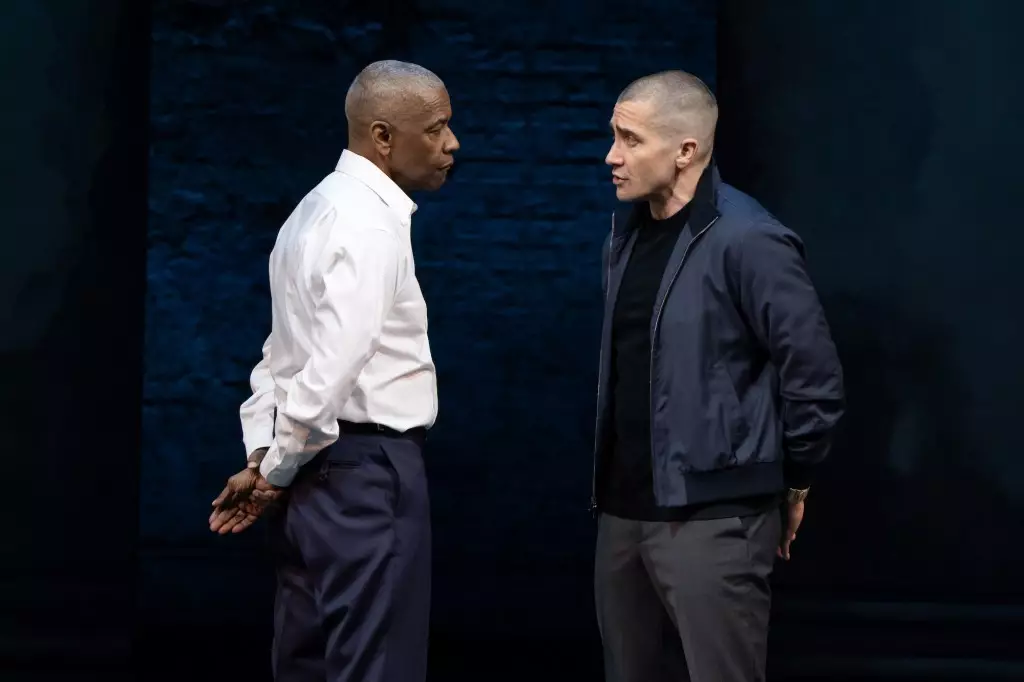Broadway has revealed exhilarating news as it celebrates a momentous turnaround in the wake of the pandemic. As of last week, season-to-date box office revenues have reached an impressive $1,801,023,860 in the 2024-2025 season. Not only does this figure mark a substantial recovery from the pandemic’s devastating effects, but it also surpasses the corresponding week of the pre-COVID record-setting season of 2018-2019. This remarkable achievement speaks volumes about the resilience of the Broadway community, but it prompts further exploration of the industry’s current landscape and the dynamics fueling this resurgence.
One of the most noteworthy factors behind these soaring numbers is the star power of current productions. Shows like “Good Night, And Good Luck,” featuring Hollywood icon George Clooney, and an electrifying rendition of “Othello” with Denzel Washington and Jake Gyllenhaal, have captivated audiences and driven box office sales to unprecedented heights. Both of these shows have consistently surpassed the $3 million mark each week, reflecting not just the allure of star-studded casts but also the rising ticket prices that accompany such high-profile productions. With premium tickets reaching as high as $800, it’s evident that the passion for theater continues to thrive among dedicated audiences ready to pay a premium for unforgettable experiences.
Addressing Industry Challenges
However, amidst the celebratory figures lies an underlying cautionary tale. Jason Laks, President of the Broadway League, highlighted a critical reality that industry stakeholders must acknowledge. While the impressive gross figures are indeed a cause for celebration, they can be misleading. Laks urges a nuanced understanding of the industry’s condition, pointing out that the remarkable success of specific productions has largely skewed the overall revenue landscape. Without these blockbuster shows, Broadway would still lag behind its pre-pandemic achievements, showing that high box office sales alone are not indicative of a fully healthy market.
Laks’ emphasis on the challenges faced by all productions resonates deeply. The cost of producing a Broadway show continues to rise exponentially—a reality that puts immense pressure on both new and existing efforts. The competition for audiences is fierce, and productions now have a substantially reduced timeframe to establish themselves and bring in attendees. This cuts both ways, as fewer funded shows might mean less artistic diversity on the stage, which ultimately undermines Broadway’s cultural richness.
Audience Dynamics and Future Sustainability
In analyzing the numbers, it becomes clear that soaring ticket prices have contributed significantly to the robust gross figures. For example, total attendance to date is 13,979,961, while the box office receipts reveal an average paid admission of $128.83, which is notably higher than the $124.08 average from 2018-2019. While higher revenues can be framed positively, the reality of diminished attendance compared to pre-pandemic figures reflects an urgent need for strategic rethinking in terms of audience engagement.
Through stellar productions like “Othello,” which grossed a jaw-dropping $3,229,396 last week, Broadway exhibits its ability to regain audience interest. Yet, with attendance numbers still below their former highs, there is a pressing need for inclusivity and adaptability to attract diverse demographics. The experience of Broadway must evolve to cater to varying tastes and cultural backgrounds to rejuvenate its audience base and ensure long-term success.
As indicated by Laks, the success of 2019 cannot be the benchmark for the future. Broadway’s ability to thrive hinges on ample investment, innovative approaches to productions, and a commitment to affordability—especially for younger and first-time audiences. Whether it’s affordable ticket initiatives, extended show runs, or partnerships with digital platforms, the industry must continuously adapt to meet the evolving expectations of the audience. Only by embracing a broader vision can Broadway ensure its legacy as a cultural touchstone while navigating the complexities of contemporary entertainment.
Integrating New Works and Varied Stories
It’s also worth spotlighting the emerging productions that are pulling in impressive figures. Shows like “Just In Time,” a musical about Bobby Darin, and “Buena Vista Social Club,” which has gained traction from multiple Tony nominations, illustrate the diverse storytelling and rich variety in themes that have begun to surface in response to audience cravings for innovation. Broadway must continue to support new works and unique voices that can resonate with a more comprehensive array of experiences. This diversification in storytelling not only enhances the cultural fabric of Broadway but also expands its market reach.
The current landscape is therefore a balancing act between maintaining the glamour of star-led blockbusters and fostering an environment where new narratives can thrive. The gatekeepers of Broadway must be vigilant in their efforts to nurture both existing hits and emerging talent, thereby ensuring that the theatrical landscape remains vibrant, inclusive, and reflective of the society it entertains.

